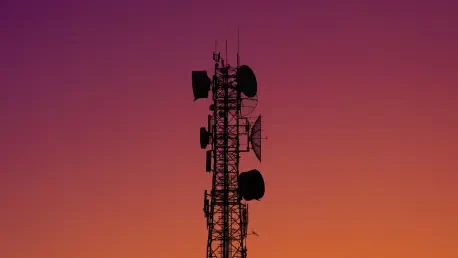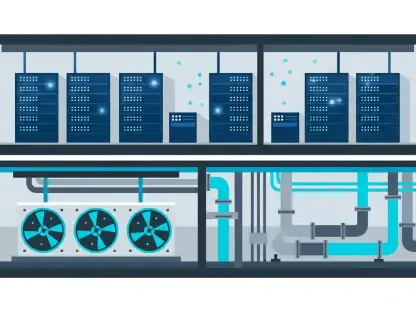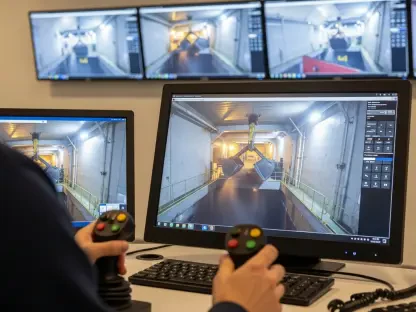As the world shifts towards faster and more reliable connectivity, microwave towers are emerging as pivotal components in the evolution of communication networks. These structures are becoming increasingly significant as industries seek solutions to manage the ever-growing demand for high-speed data transfer, especially in areas where traditional fiber optics face challenges. The rise of 5G networks and the requirement for robust backhaul infrastructure are driving demand for these towers, providing reliable alternatives in regions where physical or financial barriers hinder other methods. Given this backdrop, the microwave transmission tower market is poised for substantial growth in the coming years, with forecasts predicting a rise from USD 12.13 billion to USD 21.29 billion by 2032, reflecting a steady compound annual growth rate of 6.45%. Expanding broadband access and facilitating digital transformation are key goals across various sectors, including telecommunications, military, public safety, and broadcasting, positioning these towers at the forefront of future communication systems.
Microwave Tower Advantages and Deployment
The advantages of microwave towers are primarily their ability to bridge connectivity gaps where conventional fiber optics fall short, such as in remote and rugged terrains. They serve as a cost-effective, timely solution, particularly for developing countries looking to enhance their communication infrastructure without the prohibitive costs associated with laying extensive fiber networks. The rapid deployment and lower resource demands further add to their appeal, allowing organizations to bypass some of the complications and expenses of more traditional methods. Low latency and high reliability, crucial for industries with mission-critical communication requirements, increase their viability, ensuring seamless operations across various applications. Moreover, the integration of IP and Ethernet backhaul capabilities in modern towers is facilitating the transition to advanced all-IP networks, enhancing overall efficiency and communication speed.
In regions underserved by terrestrial infrastructure like rural or isolated locales, microwave towers are invaluable for improving connectivity. These structures, which can seamlessly penetrate challenging terrains such as mountains or deserts, offer a sustainable and accessible alternative to traditional methods. Their deployment is becoming more frequent in areas where swift communication infrastructure improvements are needed. As countries aim to expand their network capabilities, the utility of microwave towers is becoming more apparent, not just for broadband and telecommunication needs but also for expanding broadcasting and public safety networks. Partnerships between governments, telecom operators, and infrastructure providers are also propelling growth, as these collaborations help address connectivity needs, particularly in less accessible regions.
Key Market Trends and Developments
The market trends reveal a shift towards more energy-efficient and lightweight microwave tower designs, focusing on environmental impact reduction and enhanced performance in varied climates. Modern designs incorporate modular construction and wind-resistant features, which are particularly beneficial in regions prone to severe weather. The movement towards green digital infrastructure is noticeable in Europe, where existing towers undergo modernization efforts as part of the broader network expansion strategy. Meanwhile, public-private tower-sharing initiatives are gaining traction in the Middle East and Africa, fueled by governmental support to extend coverage into underserved areas.
In North America, significant investments are being directed toward expanding microwave backhaul networks, dovetailing with broader 5G and smart city projects. The United States and Canada are leading these initiatives to enhance connectivity and integrate advanced technologies systematically into urban planning. Additionally, Asia-Pacific countries like India, China, and Indonesia are investing heavily in infrastructure to meet the soaring internet service demand and boost rural penetration. All these endeavors highlight a collective move towards more resilient, sustainable, and efficient communication systems, positioning microwave towers as an integral part of modern digital infrastructure solutions around the world.
Challenges and Competitive Landscape
Despite favorable growth prospects and the critical role microwave towers can play in advancing global communication networks, several challenges persist. One of the primary obstacles is the line-of-sight requirement, which can be problematic in densely built urban areas or mountainous regions. Ensuring clear, unobstructed visibility between towers is essential for optimal performance, yet urban sprawl and natural terrains complicate deployments. Regulatory issues such as spectrum allocation, licensing, and interference management also pose hurdles, potentially delaying implementations and inflating costs.
Furthermore, although microwave infrastructure offers quick deployment advantages, it requires constant maintenance and upkeep, particularly in harsh weather environments that could lead to environmental damage. While microwave towers are viable short-term solutions, fiber optics remain a benchmark for ultra-high bandwidth, offering long-term competition. Thus, industry players, including major corporations such as American Tower Corporation, Crown Castle, Huawei Technologies, NEC Corporation, Nokia, and others, are heavily investing in infrastructure development to bolster positions and address competitive pressures. Their strategic partnerships with telecom providers and governments globally underline efforts to enhance tower deployment and strengthen signal reach.
Future Outlook and Opportunities
As societies progress toward enhanced connectivity, microwave towers are becoming crucial in the development of communication networks. These towers are indispensable as industries look for ways to handle the surging demand for high-speed data transfer—particularly in areas where conventional fiber optics run into obstacles. With the advent of 5G networks and the necessity for strong backhaul infrastructure, the need for these towers is on the rise. They offer reliable solutions where physical or financial constraints hinder other approaches. With this context, the microwave transmission tower market is expected to expand significantly in the upcoming years. Projections suggest an increase from USD 12.13 billion to USD 21.29 billion by 2032, marking a consistent compound annual growth rate of 6.45%. Enhancing broadband access and driving digital transformation are primary objectives across multiple sectors, like telecommunications, military, public safety, and broadcasting, placing these towers at the heart of future communication systems.









